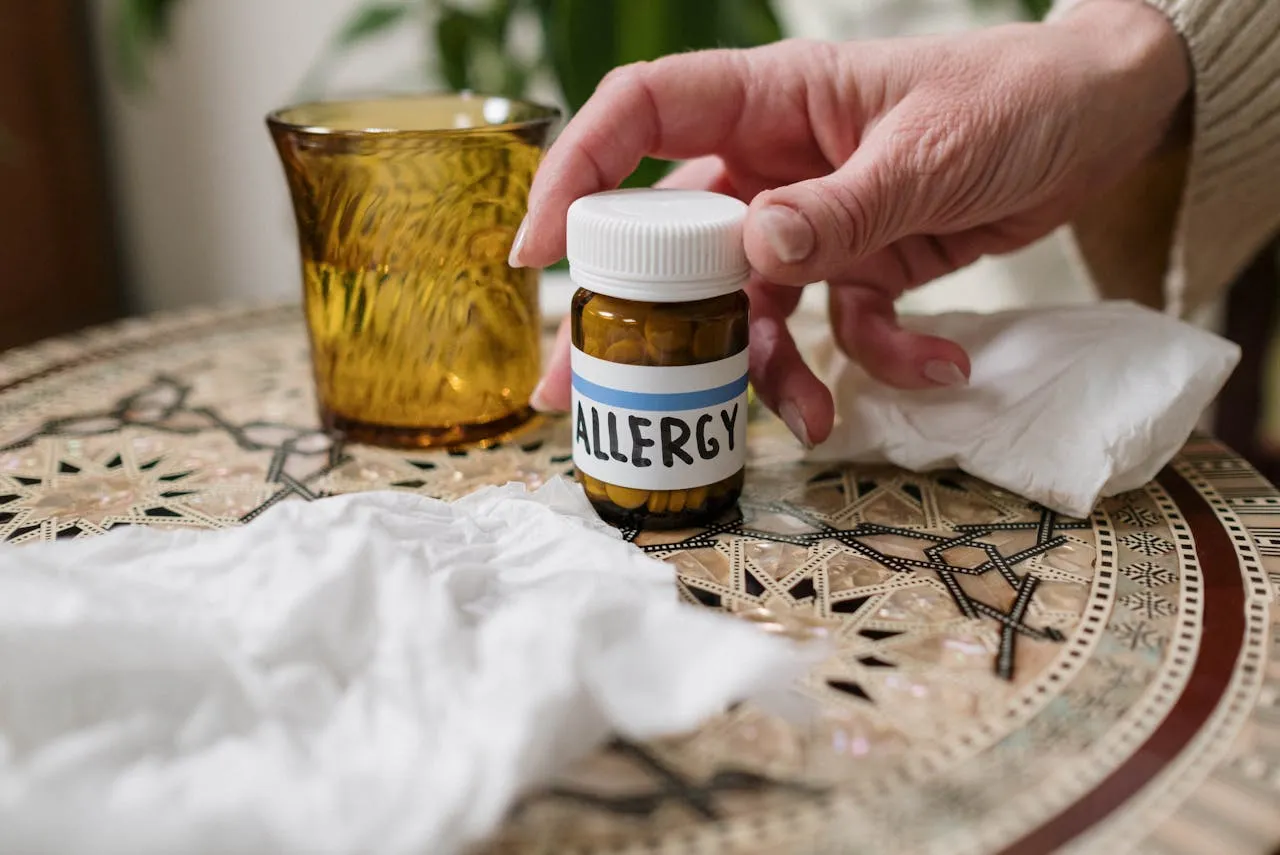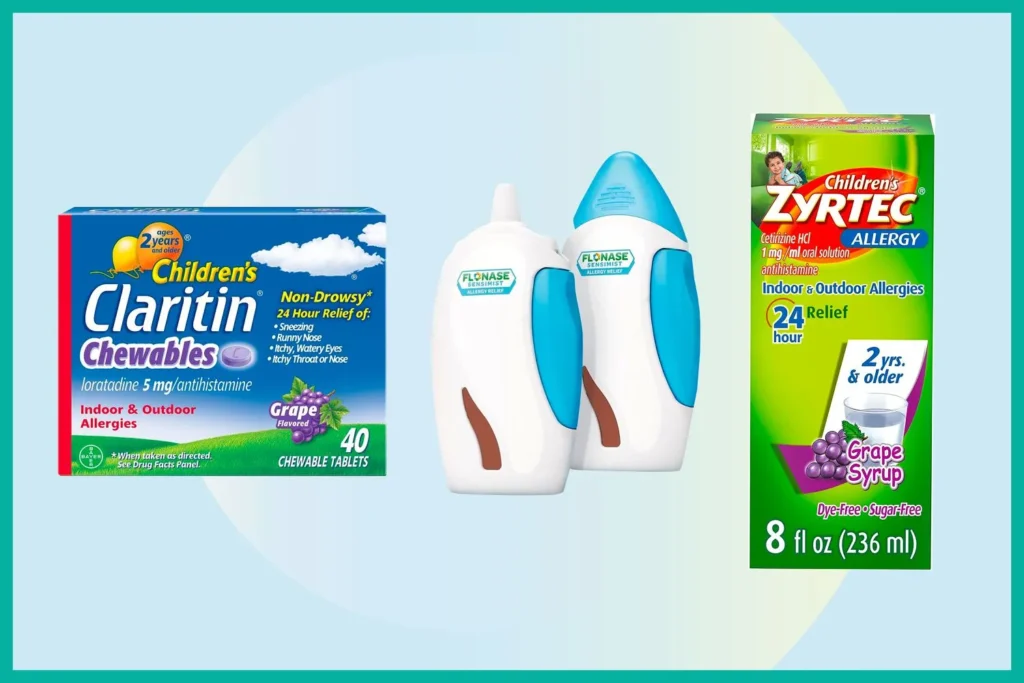
For allergy sufferers, the season of congestion, sneezing, watery eyes, scratchy throats, and runny noses may arrive earlier than usual this year. To ensure you don’t miss out on the joys of spring, it’s essential to get ahead of your symptoms now and take proactive measures.
Over-the-counter (OTC) medications have long been the go-to solution for relief among the more than 80 million Americans who suffer from allergic rhinitis—commonly referred to as seasonal allergies or “hay fever.” Decongestants like Sudafed, antihistamines such as Zyrtec and Benadryl, and pain relievers like Advil are among the most commonly used treatments.

However, national brands aren’t the only effective option when it comes to clearing your head and alleviating symptoms. Walgreens brand products offer the same active ingredients and FDA approval as national brands but at a lower price—typically 25% less on average. Additionally, they come with the Walgreens Pharmacist Recommended label and a 100% satisfaction guarantee.
A Longer Spring Means More Pollen—and More Allergies
Seasonal allergy sufferers who feel that their symptoms have been worsening in recent years are not imagining things. Research published in 2021 indicates that climate change has extended pollen seasons by approximately three weeks compared to 30 years ago. Additionally, pollen concentrations have increased by 20%, leading to more intense allergy symptoms for many individuals.
This prolonged and intensified season is impacting health significantly, particularly among young people and adults. Many individuals are even developing seasonal allergies for the first time.
To help customers navigate season with ease, Walgreens pharmacist Nancy Salman and Kim Webb, director of owned brands commercialization OTC division, share their expertise on seasonal allergies and available treatments.
Identifying Your Allergy Symptoms for the Right Treatment
While there are common symptoms, every person’s treatment plan should be tailored to their unique needs. The OTC gold standard for managing seasonal allergies often includes a steroid nasal spray combined with an antihistamine and, in some cases, a decongestant. However, according to Salman, every patient’s treatment plan is different. Customizing a combination of products is common, as factors such as age, existing health conditions, and symptom severity play a role in determining the most effective solution.
“When you’re standing in the store looking at the products on the shelf, ask yourself, ‘What am I trying to treat?’” Salman explains. “If you don’t have congestion, you don’t need a medicine that treats it. If you’re unsure, ask your Walgreens pharmacist, and they will help you select the right product for your symptoms.”
Salman also advises checking the product packaging to determine the symptoms it addresses and purchasing the appropriate quantity. “If you know your symptoms will persist for months, consider buying a larger supply, such as a box of 90 tablets. If you just need relief for a short period, a smaller pack may be more suitable,” she adds.
To alleviate the most common seasonal allergy symptoms, Salman recommends:
- Walgreens Allergy Relief Tablets (antihistamine alternative to Zyrtec)
- Walgreens 12-Hour Nasal Decongestant D (decongestant alternative to Sudafed)
- Walgreens Dye-Free Allergy Relief Liquid Caps (antihistamine alternative to Benadryl)
- Walgreens Ibuprofen (alternative to Advil)
For additional relief from congestion, sneezing, and itchy eyes, she suggests:
- Walgreens Allergy Nasal Spray (alternative to Flonase)
- Walgreens Non-Drowsy Allergy Nasal Spray (alternative to Nasonex)
- Wal-itin Dye-Free Chewable Tablets (24-hour allergy relief for children)
Understanding ‘National Brand Equivalent’ and Its Importance
Before any OTC allergy medication reaches store shelves—whether it’s a private label or a national brand—it must undergo rigorous evaluation by the U.S. Food & Drug Administration (FDA) to ensure safety and efficacy.
All FDA-approved OTC medications feature a Drug Facts label, which outlines key information, including the intended use, recommended dosage, warnings, and active ingredients. This transparency allows consumers to compare different products and make informed decisions.
Walgreens brand allergy medications are categorized as national brand equivalents, meaning they contain the same active ingredients and undergo the same regulatory reviews as their national brand counterparts. Products labeled with “Compare to” on the packaging indicate that they provide equivalent effectiveness to the named brand.
“A customer can hold up the national allergy brand and the Walgreens brand side by side, flip them over, and see that the active ingredients match,” explains Webb. “This ensures they are receiving the same relief as they would with a national brand.”
In addition to offering the same active ingredients, Walgreens brand allergy products often provide added benefits that some national brands do not, such as liquid and capsule delivery options and dye-free alternatives. Walgreens brand allergy medications are conveniently placed on store shelves immediately next to their national brand equivalents, making it easy for customers to find and compare them based on packaging colors.
Walgreens’ Commitment to Affordable Allergy Relief
“As pharmacists and healthcare professionals, our priority is achieving the best health outcomes for our patients at the lowest possible cost,” Salman says. “Walgreens brand allergy medicines provide the same relief as national brands but at a fraction of the price, making them a great option for allergy sufferers.”
Beyond providing cost-effective medication, Walgreens is dedicated to educating customers about allergy management through in-store consultations, online resources, and pharmacist recommendations. By understanding their symptoms and selecting the appropriate treatments, allergy sufferers can enjoy a more comfortable and symptom-free season.
How to Take Charge of Your Allergy Season
If you are one of the millions of Americans affected by seasonal allergies, now is the time to take proactive steps to minimize your symptoms. Start by identifying your triggers, monitoring local pollen counts, and implementing preventive measures, such as keeping windows closed, using air purifiers, and showering after spending time outdoors.
For effective symptom relief, consult with your Walgreens pharmacist to determine the best combination of OTC medications tailored to your needs. Whether you opt for a national brand or Walgreens brand allergy product, staying consistent with your treatment plan will help you manage symptoms and fully enjoy the beauty of spring without interruption.
With Walgreens’ extensive selection of national brand equivalent allergy medications, affordable pricing, and expert pharmacist guidance, navigating allergy season has never been easier. Don’t let seasonal allergies hold you back—prepare now and embrace the season with confidence.







